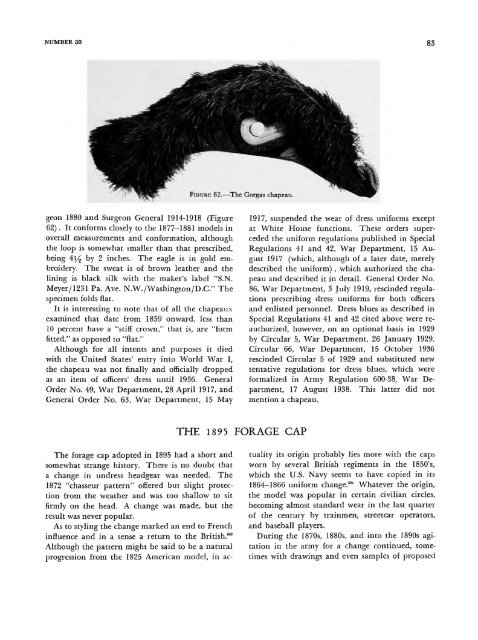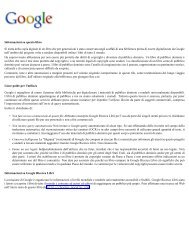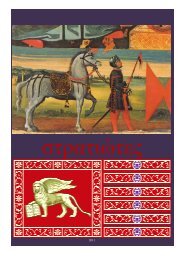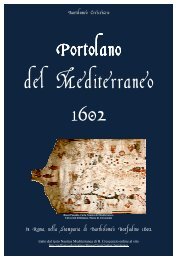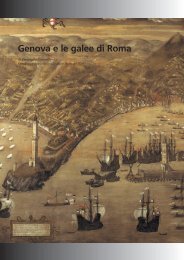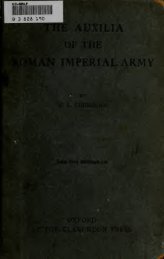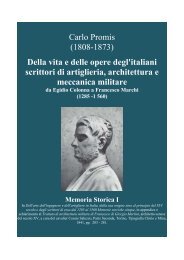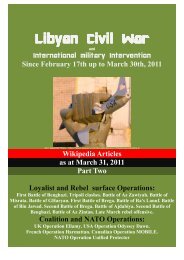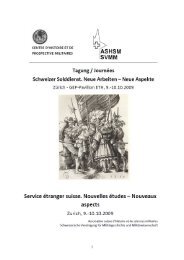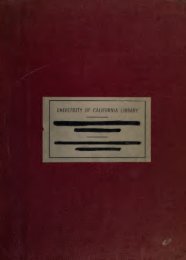United States Army Headgear 1855-1902 - Libreria Militare Ares
United States Army Headgear 1855-1902 - Libreria Militare Ares
United States Army Headgear 1855-1902 - Libreria Militare Ares
- No tags were found...
You also want an ePaper? Increase the reach of your titles
YUMPU automatically turns print PDFs into web optimized ePapers that Google loves.
NUMBER 30geon 1880 and Surgeon General 1914-1918 (Figure62). It conforms closely to the 1877-1881 models inoverall measurements and conformation, althoughthe loop is somewhat smaller than that prescribed,being 4i/^ by 2 inches. The eagle is in gold embroidery.The sweat is of brown leather and thelining is black silk with the maker's label "S.N.Meyer/1231 Pa. Ave. N.W./Washington/D.C." Thespecimen folds flat.It is interesting to note that of all the chapeauxexamined that date from 1859 onward, less than10 percent have a "stiff crown," that is, are "formfitted," as opposed to "flat."Although for all intents and purposes it diedwith the <strong>United</strong> <strong>States</strong>' entry into World War I,the chapeau was not finally and officially droppedas an item of officers' dress until 1936. GeneralOrder No. 49, War Department, 28 April 1917, andGeneral Order No. 63, War Department, 15 May1917, suspended the wear of dress uniforms exceptat White House functions. These orders supercededthe uniform regulations published in SpecialRegulations 41 and 42, War Department, 15 August1917 (which, although of a later date, merelydescribed the uniform), which authorized the chapeauand described it in detail. General Order No.86, War Department, 3 July 1919, rescinded regulationsprescribing dress uniforms for both officersand enlisted personnel. Dress blues as described inSpecial Regulations 41 and 42 cited above were reauthorized,however, on an optional basis in 1929by Circular 5, War Department, 26 January 1929.Circular 66, War Department, 15 October 1936rescinded Circular 5 of 1929 and substituted newtentative regulations for dress blues, which wereformalized in <strong>Army</strong> Regulation 600-38, War Department,17 August 1938. This latter did notmention a chapeau.THE 1895 FORAGE CAPThe forage cap adopted in 1895 had a short andsomewhat strange history. There is no doubt thata change in undress headgear was needed. The1872 "chasseur pattern" offered but slight protectionfrom the weather and was too shallow to sitfirmly on the head. A change was made, but theresult was never popular.As to styling the change marked an end to Frenchinfluence and in a sense a return to the British."'Although the pattern might be said to be a naturalprogression from the 1825 American model, in actualityits origin probably lies more with the capsworn by several British regiments in the 1850's,which the U.S. Navy seems to have copied in its1864-1866 uniform change.""' Whatever the origin,the model was popular in certain civilian circles,becoming almost standard wear in the last quarterof the century by trainmen, streetcar operators,and baseball players.During the 1870s, 1880s, and into the 1890s agitationin the army for a change continued, sometimeswith drawings and even samples of proposed


